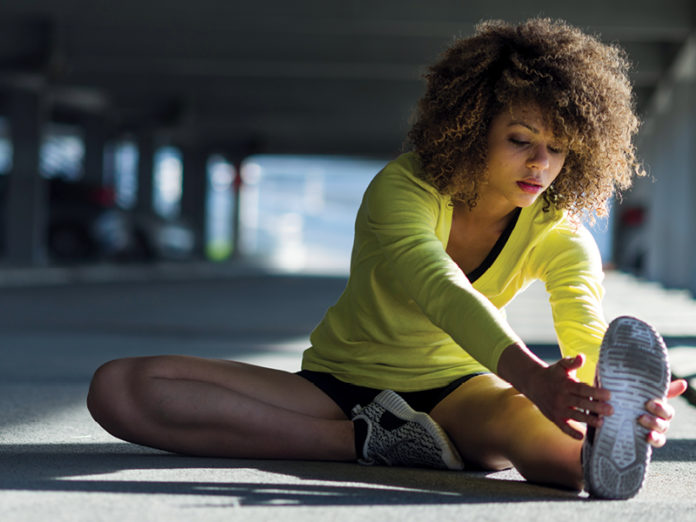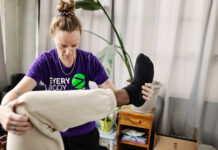
Stretching is like an egg. One minute the research says it is healthy and the next minute it isn’t. Decades ago it seemed like athletes didn’t stretch. Then it seemed obvious that, of course, stretching is healthy, but don’t do dynamic stretching or you’ll hurt yourself. More recently the research suggests that static stretching weakens muscles. What gives? We’re here to answer five key questions about stretching.
1What’s a stretch?
A muscle stretch takes place when the overlapping protein fibres of the muscle cells slide past each other to elongate the muscle. Static stretches are best for this kind of result. Dynamic stretches are exercises done to warm up the body in preparation for training or performance. A lot of confusion surrounding stretching might have been avoided if this class of exercise had been called something else.
2Why stretch?
We need to stretch to maintain adequate muscle length and avoid the malalignment problems that can predispose us to injurr and/or chronic pain. Adaptive shortening is an insidious process that affects everyone and occurs if we do not consistently ask the joints of our body to move through a full range of motion. As we get older it becomes ever more valuable for us to maintain a daily regimen of appropriate mobility exercises to maintain good structural alignment and full joint range of motion. Find stretching boring? Nothing is more boring than waiting for an injury to heal. Or worse, laying in a hospital bed waiting for your turn under the knife.
3Which muscles should I stretch?
A stretching program needs to be designed around individual needs to be effective. Going by feel can be misleading as muscles that feel tight are often being pulled taut by another muscle and are unlikely to benefit from being stretched more. Eliminating that tight feeling is more likely to occur by stretching the shortened muscles that are pulling the target muscle. The most common example of this phenomenon is chronically tight hamstrings. When someone complains that their hamstrings are tight, check their pelvic position. More often than not, that person’s pelvis is rotated too far forward. This results in the hamstrings being placed under perpetual stretch tension. The usual suspects are the muscles of the low back, quadriceps and inner thighs. Creating more length in these muscles will help return the pelvis to a more neutral position and often, almost magically, solve the tight hamstrings mystery.
4How long should I hold a stretch?
Research is inconclusive on the optimal time for holding a stretch. I ask my patients to hold their stretches for 60 seconds. I have found that most people will stretch as aggressively as their pain threshold will allow. However, there is this thing called the stretch reflex, a natural defence mechanism that occurs in response to either a very sudden or strong pull on the muscle. If you stretch too aggressively the reflex contraction will counteract your stretch, typically resulting in post-exercise soreness but no added length. All pain, no gain. A 60-second stretch discourages you from stretching too aggressively for the simple reason it usually causes pain in less than 60 seconds. If you can hold the stretch for 60 seconds without creating pain, you are almost certainly not stretching too aggressively.
5When should I stretch?
Many studies have proven that static stretching results in temporary strength decreases in the muscles being stretched. So don’t do a lot of static stretching right before you need to perform, whether in competition or training. It will hinder your performance. Dynamic stretching is best for pre-event preparation. Save your static stretching for post-event and for your rest and recovery days.
















